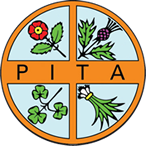4 July 2022. Forests are an extremely important part of the environment. Well-managed sustainable forests give multiple benefits to society, such as livelihoods, ecosystem services and biodiversity, while helping to tackle climate change.
To ensure the long-term health of European forests, sustainable forest management underpins how the paper industry operates and sources its main raw material.
A number of schemes exist to ensure forests are sustainably managed. The two most recognised are the Forest Stewardship Council® (FSC®) and the Programme for the Endorsement of Forest Certification™ (PEFC™).
Both the FSC® and PEFC™ schemes have similar objectives: the certification of forests to credible, independently verified standards of responsible forest management, conserving the natural habitats of plants and animals, and respecting the rights of forestry workers and local communities. Both operate a robust chain of custody schemes that track wood and wood fibre through every step of the supply chain, from the forest to the end-user.
Look Out For The Certification Label
When you buy a product carrying the FSC/PEFC label, you can be assured that any trees used to make it were harvested and replaced or allowed to regenerate naturally without harm to people, wildlife or the environment. The FSC/PEFC label carries a Chain of Custody code, which enables the product to be tracked from the forest to the store – every link between the forest and the consumer is certified, making it easy to identify what is FSC/PEFC certified and what isn’t; if it doesn’t carry the label, it isn’t certified!
Certification Schemes - FSC
Certification Schemes - PEFC
Common FSC/PEFC Certified Paper Products
Next time you’re buying paper or paper packaging, look out for products with these labels:
- Paper – whether it’s A4 paper for your printer or note paper, there are plenty of FSC/PEFC-certified options available from your local stationer or supermarket.
- Greeting cards – check on the back of the card for the FSC/PEFC label.
- Wrapping paper – more and more retailers are selling FSC/PEFC certified wrapping paper. It’s worth remembering, however, that if you’re hoping to recycle wrapping paper and greeting cards that embellishments such as ribbons or glitter aren’t recyclable so will need to be removed before putting them in the recycling bin – or opt for plain and simple if you can.
- Food packaging – with the shift away from plastic, more food is being packaged into paperboard cartons; if it’s FSC/PEFC certified paperboard, the label will be printed somewhere on the packaging.
- Tissues and toilet roll – of course, softness is important, but so is the planet, so look out for the FSC/PEFC logo!
Other Labels To Look Out For
As well as FSC/PEFC, there are other organisations and bodies from around the world that promote and support sustainable forestry and the production of paper products that we might find for sale here in the UK. The most common ones to look out for are:
Blue Angel
An environmental label in Germany that has been awarded to particularly environmentally friendly products and services since 1978.
EU Ecolabel
Recognised across Europe and worldwide, the EU Ecolabel is a label of environmental excellence that is awarded to products and services meeting high environmental standards throughout their life-cycle: from raw material extraction, to production, distribution and disposal.
SFI
North American Sustainable Forestry Initiative operates in the U.S. and Canada and works across four pillars: standards, conservation, community, and education.
Nordic Ecolabel
The Nordic Ecolabel or Nordic swan is the official sustainability ecolabel for products from the Nordic countries.
Two Sides, by Josh Birch
Rainforest Alliance
Its little green frog is a symbol of environmental, social, and economic sustainability and can be found on farm and forest products around the world.
Certification Schemes - Rainforest Alliance
When you next go shopping, either in-store or online, keep an eye out for the above logos and rest assured, that if you see one, you know that the paper packaging/materials have come from sustainably managed forests.
